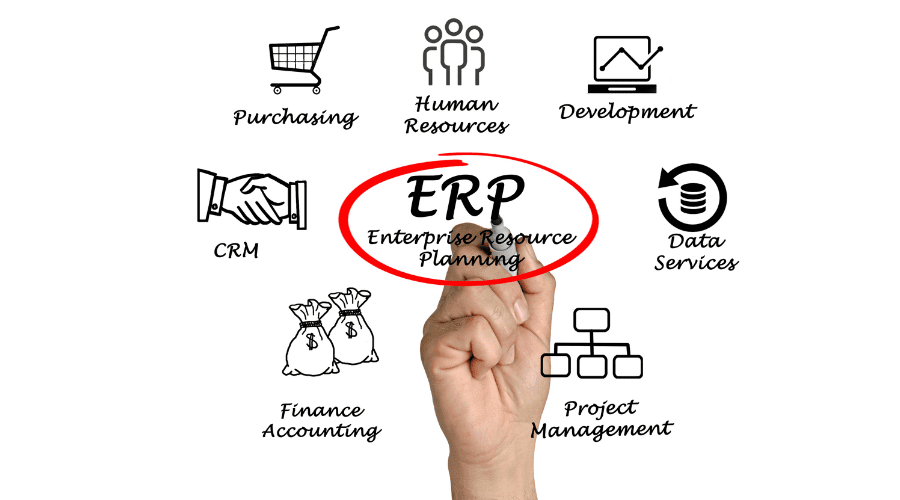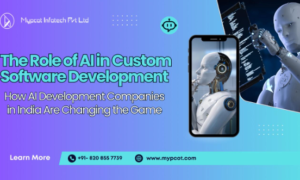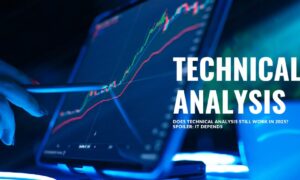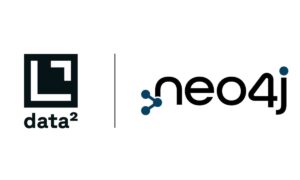Enterprise Resource Planning (ERP) enables seamless integration, streamlined operations, and optimized performance. Today, ERP systems like Navigator ERP for manufacturers are an essential part of many businesses, providing a central platform for managing their operations, finance, Human resource, and supply chain. But what exactly is ERP and what does the future hold for this game-changing technology?
What is Enterprise Resource Planning?
Enterprise Resource Planning (ERP) is a comprehensive software solution that integrates various business processes and functions into a single system. It allows organizations to streamline their operations, improve efficiency, and enhance productivity. ERP provides a centralized database where all data can be accessed in real-time, ensuring accurate and up-to-date information across different departments.
With ERP, businesses can automate key processes such as inventory management, production planning, sales tracking, financial management, human resources, and more. The system facilitates seamless communication between different departments and eliminates the need for manual data entry or multiple standalone systems.
One of the key features of ERP is its ability to generate insightful reports and analytics. Organizations gain valuable insights into their performance metrics, enabling them to make data-driven decisions and identify areas for improvement. This empowers businesses with better forecasting capabilities and helps them stay competitive in today’s fast-paced market.
The Enterprise Resource Planning Market
The global market size of Enterprise Resource Planning (ERP) has been steadily growing over the years. Organizations all around the world are recognizing its value and investing in ERP solutions to streamline their business operations.
According to a report published by MarketsandMarkets, the global ERP market is projected to reach $78.4 billion by 2026, with a compound annual growth rate (CAGR) of 8.1% from 2021 to 2026. This growth can be attributed to various factors such as increasing demand for real-time data analytics, rising adoption of cloud-based ERP solutions, and the need for enhanced operational efficiency.
North America holds a significant share in the global ERP market due to the presence of major players and early adoption of advanced technologies. However, Asia Pacific is expected to witness substantial growth during the forecast period due to rapid industrialization and digital transformation initiatives across emerging economies like India and China.
Small and medium-sized enterprises (SMEs) are also increasingly adopting ERP systems as they recognize its potential benefits in improving productivity, reducing costs, and enhancing decision-making processes. Cloud-based ERP solutions have made it more accessible for SMEs that may not have large IT budgets or resources.
Furthermore, industries such as manufacturing, retail, healthcare, transportation & logistics are among the key sectors driving the demand for ERP implementation globally. These industries require efficient management of their resources including inventory control, supply chain optimization, financial management etc., which can be effectively addressed through an integrated ERP system.
As organizations continue to digitize their operations and embrace Industry 4.0 technologies like IoT (Internet of Things), AI (Artificial Intelligence), and big data analytics; there will be an increased demand for advanced features within ERP systems such as predictive analytics capabilities or machine learning algorithms that can provide actionable insights for better decision making.

The Benefits of Enterprise Resource Planning
The benefits of Enterprise Resource Planning (ERP) are numerous and can have a significant impact on businesses of all sizes. One major advantage is improved efficiency. With an integrated system that connects various departments, employees can access and share information in real-time, eliminating the need for manual data entry or reliance on outdated spreadsheets.
Another benefit is increased visibility. ERP software provides managers with comprehensive insights into their business operations, allowing them to make informed decisions based on accurate and up-to-date data. This enhanced visibility also helps identify bottlenecks or areas for improvement, leading to streamlined processes and cost savings.
ERP solutions also promote better collaboration across departments by breaking down silos. By centralizing information and automating workflows, teams can work together more effectively towards common goals. This collaboration not only improves productivity but also fosters innovation as employees have access to a broader range of knowledge and expertise.
In addition to internal advantages, ERP systems can enhance customer satisfaction through improved order management, faster response times, and enhanced communication capabilities. By having a holistic view of customer interactions from sales to delivery and support, companies can deliver personalized experiences that meet customer expectations.
Implementing an ERP solution often leads to cost savings in the long run. By reducing manual tasks, minimizing errors caused by data duplication or inconsistencies, optimizing inventory levels through better forecasting tools – companies can reduce operational costs while increasing overall profitability.
How to Implement Enterprise Resource Planning
Implementing Enterprise Resource Planning (ERP) is a crucial step for businesses looking to streamline their operations and achieve greater efficiency. While the process may seem overwhelming at first, with proper planning and execution, it can lead to significant benefits in the long run.
It is important to conduct a thorough analysis of your current business processes and identify areas that could benefit from automation or integration. This will help determine the scope of your ERP implementation and set clear goals for what you want to achieve.
Next, choose an ERP system that aligns with your specific business needs and requirements. Consider factors such as scalability, flexibility, ease of use, and compatibility with existing systems. It’s also essential to involve key stakeholders from different departments within your organization to ensure their buy-in throughout the implementation process.
Once you have selected an ERP system, develop a detailed implementation plan which includes timelines, milestones, and resources required. Assign dedicated project teams responsible for each phase of the implementation process – from data migration and customization to user training.
During the actual implementation phase, start by focusing on core functionalities before gradually expanding into additional modules or features. This approach will help minimize disruption while allowing you to quickly realize benefits in critical areas.
Regularly monitor progress during each stage of implementation through performance metrics and key performance indicators (KPIs). This will enable you to identify any bottlenecks or issues early on so that they can be addressed promptly.
Provide comprehensive training sessions for end-users across all departments involved in utilizing the ERP system. By ensuring everyone understands how to effectively use the software within their respective roles, you can maximize its potential impact on productivity and overall organizational success.
Remember that implementing ERP is not a one-time event but rather an ongoing journey towards continuous improvement. Regularly evaluate feedback from users after go-live and make necessary adjustments as needed based on evolving business requirements.
By following these steps diligently along with proper change management strategies in place; your organization can successfully implement ERP and enjoy its many benefits, such as streamlined processes.

The Future of Enterprise Resource Planning
As technology continues to advance at an unprecedented pace, the future of Enterprise Resource Planning (ERP) holds great promise. With businesses becoming more globalized and interconnected than ever before, ERP systems are evolving to meet the demands of a rapidly changing business landscape.
One key trend that is shaping the future of ERP is the rise of cloud-based solutions. Cloud ERP offers several advantages over traditional on-premise systems, including lower costs, easier scalability, and improved accessibility. As more companies recognize these benefits, we can expect to see a continued shift towards cloud-based ERP in the coming years.
Another emerging trend in ERP is the integration of artificial intelligence (AI) and machine learning capabilities. These technologies have the potential to revolutionize how businesses operate by automating repetitive tasks, analyzing large amounts of data for valuable insights, and predicting future trends. By harnessing AI and machine learning within their ERP systems, organizations can streamline operations, improve decision-making processes, and gain a competitive edge.
Furthermore, mobile functionality will play an increasingly important role in future ERP systems. With employees working remotely or on-the-go more frequently than ever before, it’s crucial for ERP platforms to provide seamless access through mobile devices. Mobile-friendly interfaces will enable employees to access real-time information anytime and anywhere they need it.
Additionally, as cybersecurity threats continue to evolve and become more sophisticated, robust security measures will be paramount in future ERPs. Ensuring data privacy and protection will be critical for organizations as they rely on their ERP systems to store sensitive information about their operations.
Conclusion
In this digital era, Enterprise Resource Planning (ERP) has become an indispensable tool for businesses of all sizes and industries. Its ability to streamline operations, enhance efficiency, and improve decision-making processes has made it a vital asset in the global market.
The global market size of ERP is projected to continue its growth trajectory in the coming years. With advancements in technology and increasing adoption rates across various sectors, the demand for ERP solutions will only continue to rise. Businesses are recognizing the need for integrated systems that can effectively manage their resources and drive sustainable growth.
The future of ERP looks promising as it continues to evolve alongside technological advancements. Cloud-based ERP solutions are gaining popularity due to their flexibility, scalability, and cost-effectiveness. The integration of artificial intelligence (AI), machine learning (ML), Internet of Things (IoT), and analytics into ERP systems holds immense potential for businesses seeking real-time insights and predictive capabilities.



































